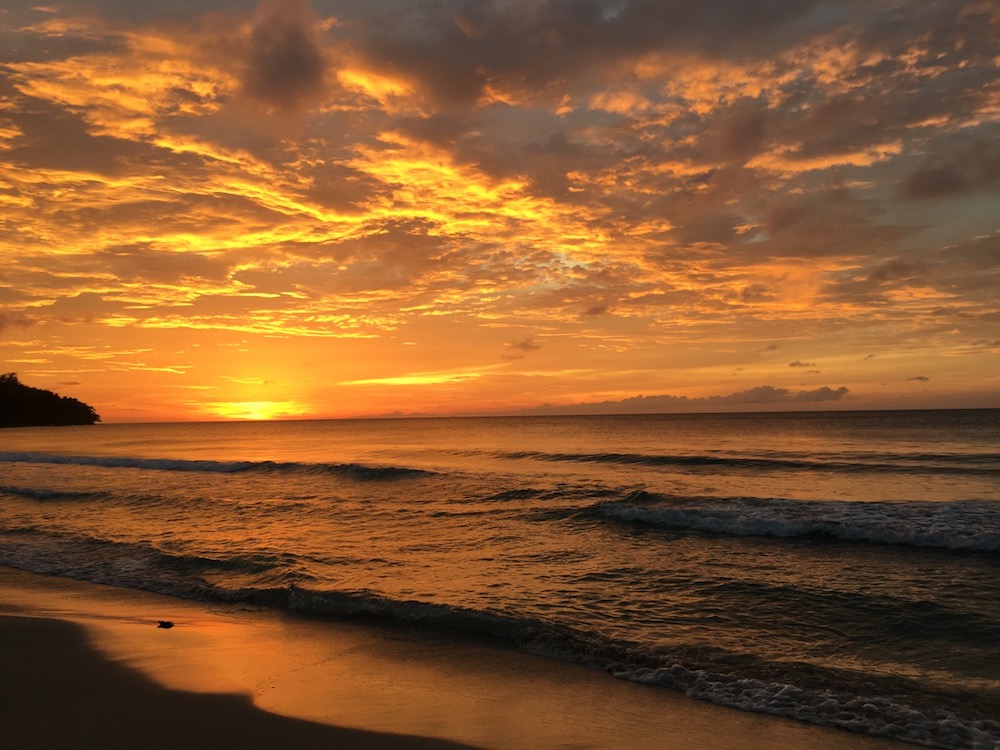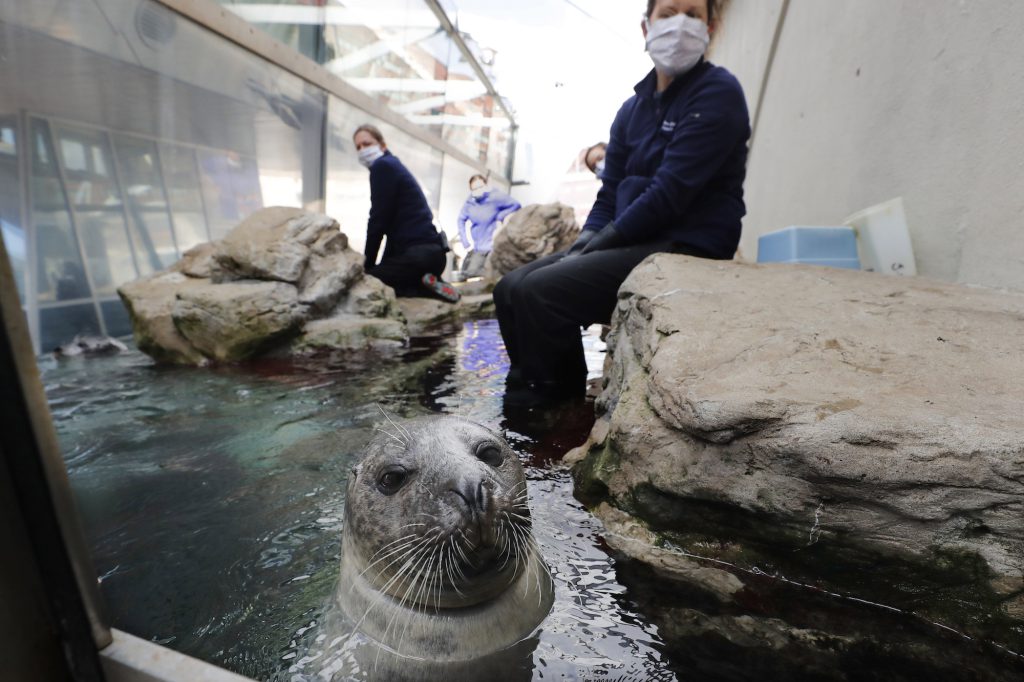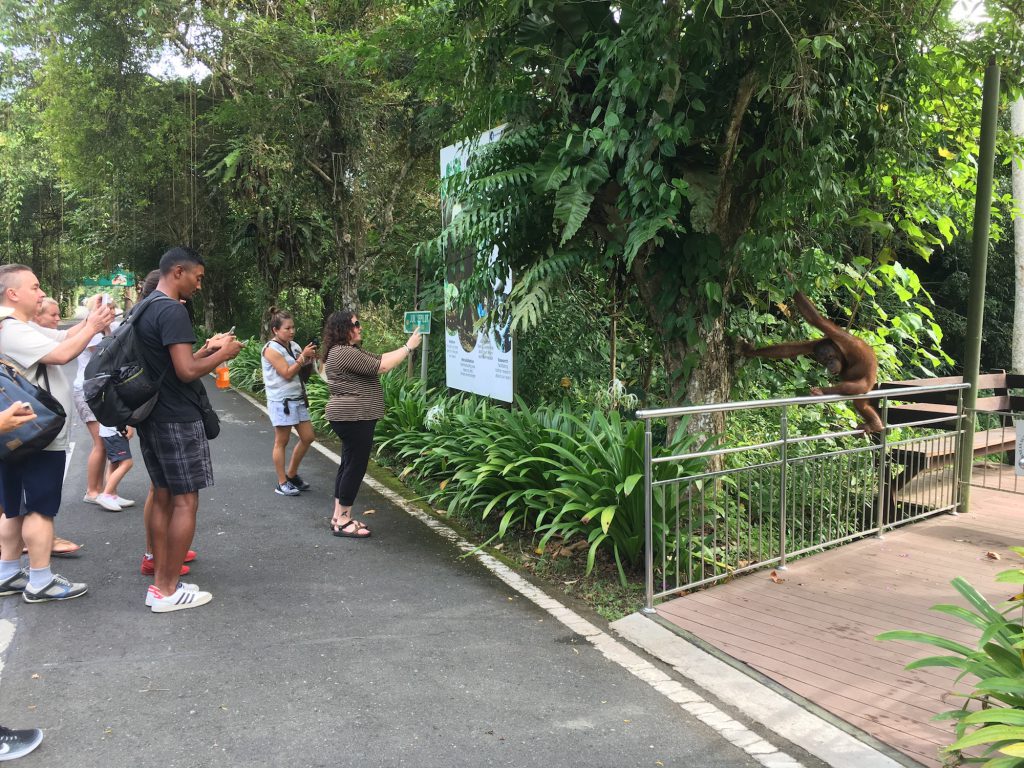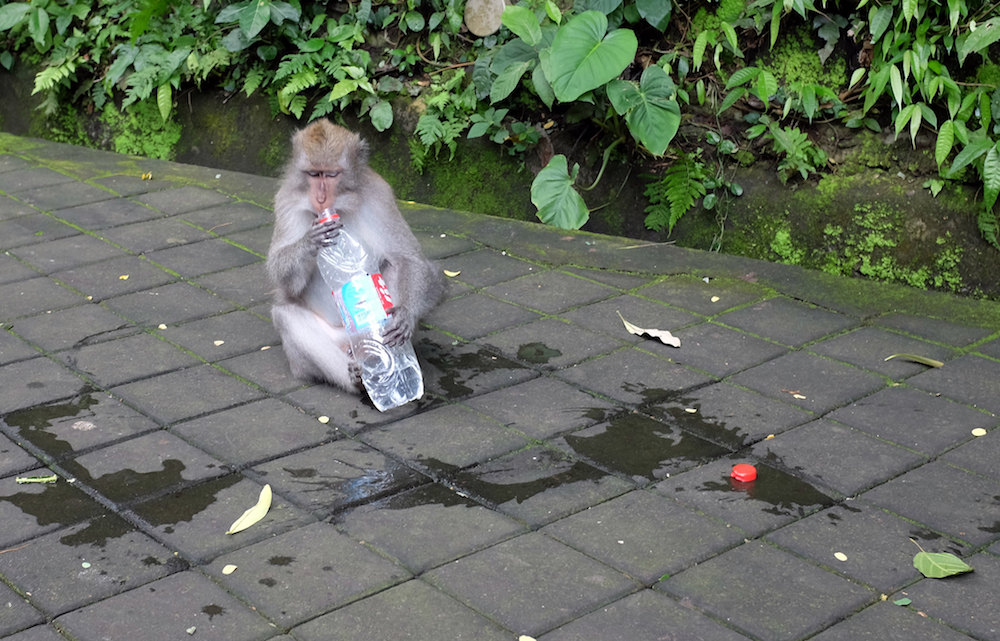The Tragic Intersection of the Coronavirus and Ecotourism

Until recently, boats ferried tourists each day along Borneo’s Kinabatangan River who were searching for elephants splashing on the shoreline, crocodiles peeking up from the khaki waters, and orangutans gliding through the treetops. But now, those boats remain moored.
Due to the novel coronavirus pandemic, foreigners are unable to enter Malaysia, and residents are under strict stay-at-home orders. The river is the only place I can venture outside of the remote field station where I live as I wait to start new research on community reforestation. I am cut off from the outside world, but I know it, too, has come to a standstill because I no longer see camera-wielding tourists driving by shortly before dusk, when wildlife viewing is at its peak.
A few hundred kilometers to the north, the normally crowded beaches at the Tip of Borneo are equally deserted. One of the area’s most successful operations—Tampat Do Aman Eco Lodge and Jungle Camp—has temporarily closed its traditional-style huts, café, education center, and guided walks program, which are designed to teach visitors about the Indigenous Rungus culture and the local flora and fauna.
“All of this has now fallen apart,” says Howard Stanton, who runs the lodge with his wife, Lorinna. In corresponding with him by email, he wrote, “[We have] had to put all staff on unpaid leave for the foreseeable future. … We have taken the decision to reduce all costs until a better time to open becomes available. We have no idea when that will be.”
Tampat Do Aman is not alone. As the coronavirus has spread, tourism sites throughout Asia, Europe, and the Americas have found their revenues nearly eliminated. This has left a staggering number of people under- or unemployed, with no way of knowing when relief will arrive.
The pandemic is bringing to light the fragility of one particular type of travel: ecotourism. This model is built on the premise that tourism is an environmentally and economically sustainable alternative to more destructive practices, such as palm oil cultivation. Ecotourism is meant to be a win-win for the landscape, wildlife, and local communities.
But the coronavirus crisis demonstrates how precarious this model is—both in terms of livelihood loss and the potential for disease transmission between humans and animals. Communities dependent on ecotourism will almost certainly continue to face these risks in the future. The World Economic Forum says COVID-19 is not an outlier but part of a pattern of increasingly common epidemics. So, in light of the global lockdown, maybe it’s time to rethink the nature of ecotourism.
Tampat Do Aman is a prime example of ecotourism. Its modest, low-impact huts are decorated with furniture made of driftwood that might otherwise litter the beaches. The lodge provides employment opportunities to the Rungus community and celebrates their history and culture. The Stantons have even created a wildlife reserve. It’s part of their mission to protect the environment of Borneo—an island that has lost half its forests to palm oil and pulpwood plantations, illegal logging, and fires.
As the supposed gold standard of tourism, the ideal ecotourism model goes a little something like this: Communities establish tourism programs that employ local people, protect wild flora and fauna, and educate visitors about the ecosystems around them. In addition to a steady source of income for the community, ecotourism projects may also help fund conservation efforts such as reforestation, wildlife rehabilitation, and educational programs.
These may seem like reasonable goals for both tourists and communities to aspire to, but there are a number of criticisms that can be levied at this model.
Despite the fact that tourism represents one of the most profitable industries worldwide, it is one of the first to take a hit when times get tough. As recent events have revealed, that presents an insidious problem to a conservation model that relies on tourists to keep communities afloat. When tourists are absent, locals’ primary source of income evaporates, and they may be forced to resort to less sustainable strategies.
Tourism operators, then, must weigh the cost of exposure to wildlife against the risks of losing the majority of their revenue.
“The virus has brought home how we are all interconnected through travel but also how fragile all these economies are and how dependent we are on each other,” Stanton told me. “If companies like ours can’t employ people and give them money to buy food, they are going to resort to going and getting it. This could mean more fishing and hunting for local wildlife.”
What’s more, ecotourism projects may give off the impression that they are locally managed and maintained, but that’s not always the case. Uninformed oversight from state governments or out-of-country nongovernmental organizations may result in a disconnect between community expectations and the actual financial, material, and spiritual benefits brought by tourism.
On a more global scale, critics of ecotourism have argued that the astronomical carbon footprint of international air travel negates any benefits that might be derived from tourists eating local fruits and vegetables, or bathing with water that is heated by solar energy.
But unpredictable economic conditions aren’t the only reason to worry about the short- and long-term ramifications of infectious disease.
On April 5, a Malayan tiger at the Bronx Zoo in New York City tested positive for COVID-19 after presumably contracting the disease from an asymptomatic zookeeper. Three other tigers and three lions at the zoo also showed symptoms of respiratory illness and are believed to be infected as well.
“Cats are known to be susceptible to a different strain of coronavirus, so it is not a surprise,” says Dr. Sergio Guerrero Sánchez, a veterinarian and co-leader of the Health at the Edge Project, which examines diseases at the human-wildlife interface in the state of Sabah in Borneo. “This brings more questions about the ecology of the virus, but it is important to understand that, for now, there is no evidence to suggest that humans can get sick from cats.”
Researchers have long highlighted the health risks posed to wildlife through repeated exposure to large groups of tourists, even in the absence of a global pandemic. The risk of infectious disease transmission is especially high for nonhuman primates, whose close evolutionary history with humans makes them particularly susceptible to the same pathogens that infect us.
It is too early to know how the coronavirus will affect nonhuman primate populations, but there is ample evidence to suggest that transmission from humans to wild populations could have dire consequences. In 2016, research from Côte d’Ivoire revealed that a different strain of coronavirus, OC43, had been passed from humans to wild chimpanzees, resulting in mild illness.
Given that even mild symptoms in humans can translate to devastating disease in nonhuman primates, it is no surprise that, in the wake of the coronavirus pandemic, specialists have put out a call to halt all tourism programs associated with wild great ape populations.
In places where governments recently closed nonessential public spaces, wildlife tourism sites were shut by mandate. This has impacted animal refuges in disparate ways.
Sanctuaries that double as tourism attractions while receiving government support—such as Malaysia’s Sepilok Orangutan Rehabilitation Centre, where I conducted research on wild macaques—are better equipped to deal with a sudden loss in revenue. Meanwhile, independent NGOs, like the adjacent Bornean Sun Bear Conservation Centre, have had to appeal to supporters for donations in order to keep their rehabilitating animals fed while all other income is suspended.
“The COVID-19 pandemic has affected Europe and the U.S. badly, and this is where most of our visitors come from,” Wong Siew Te, director of the Sun Bear Centre, told a Malaysian news site. “Even if we open after the MCO [movement control order] is lifted, no foreign tourists will come, and our income will still be affected,” he says, echoing Stanton’s concerns that tourists will be unwilling or unable to travel long after the coronavirus pandemic has peaked.
The impact of the pandemic on tourism will linger even once the final social distancing orders have ended. And once shelter-in-place rules are lifted, the decision about whether or not to stay open to visitors may rest in the hands of wildlife site managers. Tourism operators, then, must weigh the cost of exposure to wildlife against the risks of losing the majority of their revenue.
The lucrative nature of tourism, coupled with the widespread desire of tourists to seek out experiences with wildlife, has contributed to an industry that puts animals at risk while gambling with people’s long-term economic security—and their physical safety.
During my interviews in Malaysia, I spoke to a man who had interacted with long-tailed macaques at a popular Hindu temple in Bali. He told me that people were using bananas to lure macaques onto their shoulders to take selfies. “I like macaques a lot,” I said, “but they are kind of gross.”
“Yeah,” he replied, nodding. “I had one’s tail in my mouth.”
Situations like this could result in disaster. When encounters between species involve direct contact and bodily fluids (such as saliva), the risk of disease transmission increases considerably. So, sites where people and primates interact frequently represent a ticking time bomb for both humans and animals.
Pandemics pose another worrisome risk: An abrupt decrease in tourism can cause behavioral changes in wild primates that have become accustomed to a steady stream of food (either gifted or stolen) from naïve visitors.
This was illustrated in a recent video from Lopburi, Thailand, showing a horde of rhesus macaques fighting over a solitary yogurt cup. At first glance, the near absence of other people in the video might suggest these animals are only dangerous to one another. But Laëtitia Maréchal, an anthropologist who studies interactions between humans and macaques in Morocco and Gibraltar, worries that animals’ increased motivation to find alternate sources of food could have negative consequences for both people and primates.
“Some groups might seek food in different forest patches, but some groups might also forage on human-related food in town or on crops,” Maréchal says. The financial impact of a reduction in tourism combined with damage to crops could have serious ramifications for wild primates. “Macaques might become easy targets for poaching and illegal wildlife trade,” she argues.
The sparring, city-dwelling macaques of Lopburi may not be representative of animal behavior in wildlife reserves or on ecotourism ventures. But they do provide a glimpse into the trickle-down effects of an industry that has made wildlife dependent on tourists.
Despite the flaws and inherent risks associated with ecotourism, there is hope that well-managed programs can provide a net gain for communities and the ecosystems around them. However, conservationists would do well to remember that tourism is an imperfect solution to reducing community involvement in industries that contribute to deforestation and habitat degradation.
Finding ways to make those industries less harmful to the environment while placing more power in the hands of local residents could help limit deforestation and the risk of infectious diseases, plus buffer communities against sudden losses in tourism revenue. That is precisely what countries like Gabon have done as the palm oil industry has migrated from Southeast Asia to Africa. While exploring ways to expand their tourism industry, the Gabonese government has also encouraged commercial agriculture on a smaller and more equitable scale than seen in Malaysia.
The outbreak of COVID-19 has highlighted an inherent flaw in the ecotourism model: Tourism is a reliable source of income—until it isn’t. So, the pandemic could also provide an opportunity to explore and implement more resilient strategies.





























